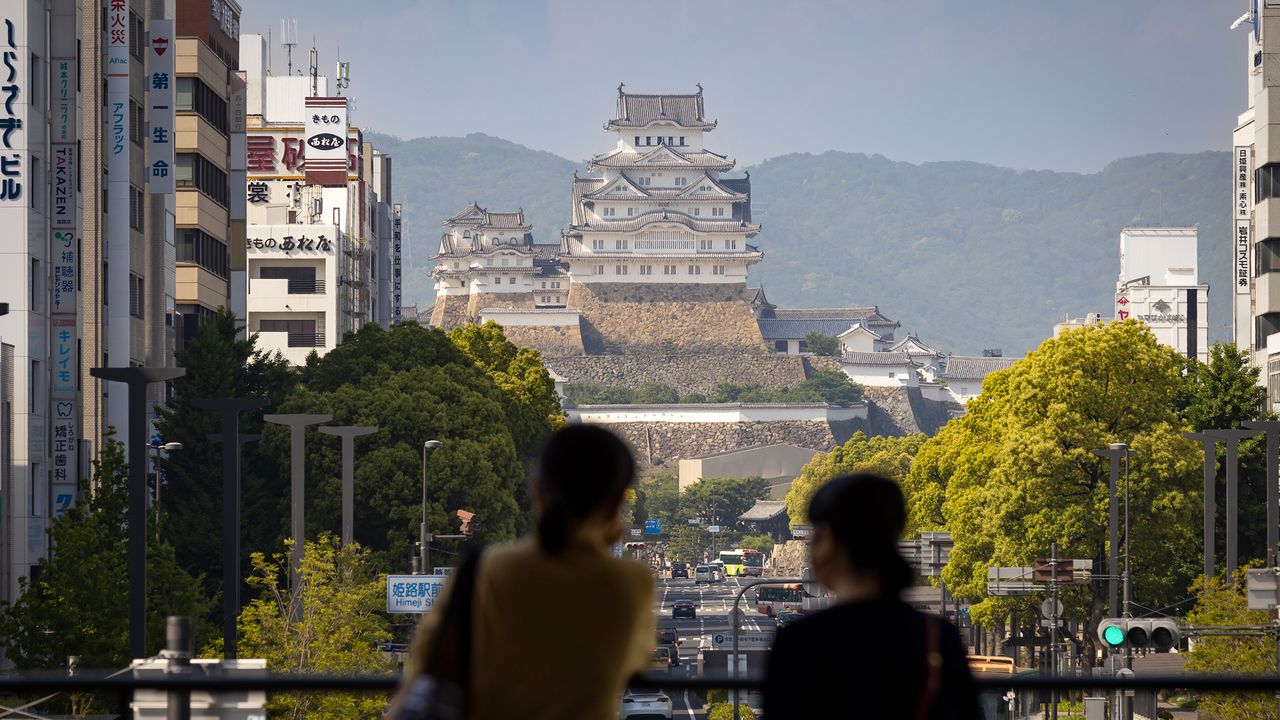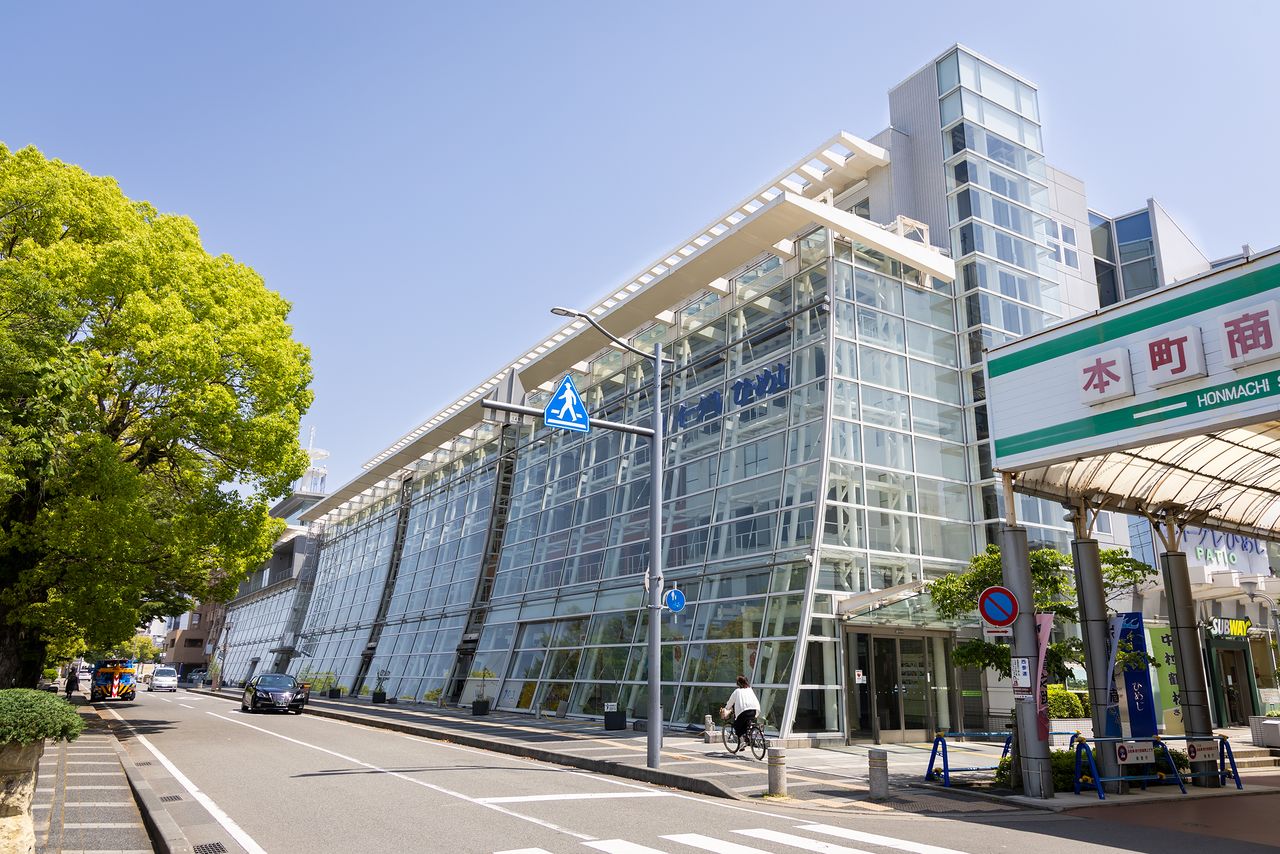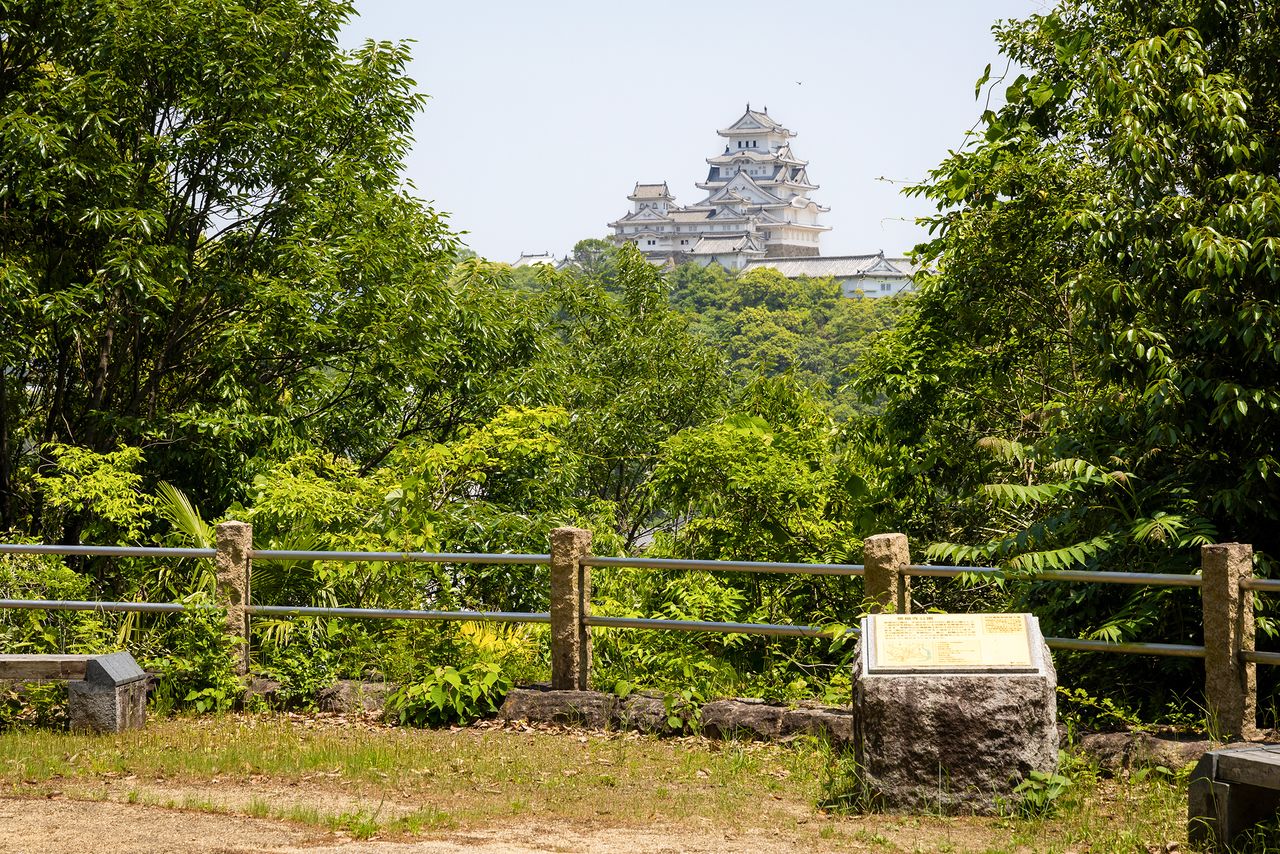
The Best Spots to View Himeji Castle
Guideto Japan
Travel Architecture- English
- 日本語
- 简体字
- 繁體字
- Français
- Español
- العربية
- Русский
Castle on a Hill
Himeji Castle is the largest and arguably the most impressive of Japan’s 12 remaining castles dating from the Edo period (1603–1868) or earlier that retain their central towers. The complex was finished in 1609, and today its white-walled keep, stone parapets, and smaller, secondary towers draw admirers from around the globe. An exceptional example of traditional castle architecture, it was designated a national treasure in 1931 and registered as a UNESCO World Heritage Site in 1995.
The castle dominates the surrounding landscape from its position atop Himeyama hill, with the shifting interplay of its roofs and eaves creating subtly differing profiles depending on the angle of the gazer. There are numerous well-known viewing points around the city, including a “top 10” list created to commemorate the keep’s World Heritage listing. In this article we visit some of the best locales to admire the splendor of Himeji Castle.

A plaque at Sannomaru Square showing the “10 best spots” for viewing Himeji Castle. Visitors can walk the route or rent a bicycle to save time and energy.
Himeji Station and Ōtemae-dōri
Exiting the north side Himeji Station reveals Ōtemae-dōri, a broad, bustling lane stretching toward Himeji Castle. The towering keep appears close enough to touch but is nearly a kilometer and a half away. Heading toward the castle, visitors can admire the distinct blend of feudal architecture and modern cityscape.

The daitenshu, the main donjon of Himeji Castle, as seen from Himeji Station.
Castle View
This viewing deck is just outside Himeji Station and overlooks Ōtemae-dōri. Opened in 2013, it offers an unobstructed view of the castle donjon and secondary keeps inui-kotenshu and nishi-kotenshu. Its comfortable, wooden interior provides a relaxing atmosphere to sit and admire the scenery.

The Castle View observation deck.

Himeji Castle from the Castle View observation deck outside the station. The nishi-kotenshu can be seen to the left of the main donjon, with the top of the inui-kotenshu visible further behind.

The observation deck is open at all hours and is an especially popular place to photograph the castle at night.
Sannomaru Square
This expansive area is inside Himeji Park near the historic Sakuramon Bridge and Ōtemon, the main gate of the complex. Open to the public, its location at the base of the castle makes it a popular spot for viewing the keep up close.

The west side of Sannomaru Square offers a clear view of the castle’s main features, including its watariyagura, roofed passages that link its secondary keeps.

The castle is lit up each night from sundown to midnight, with special seasonal and commemorative displays bathing the keep in varying color schemes.
Egret Himeji
This convention facility takes its name from shirasagi-jō, an epithet for the castle comparing it to a “white heron” or “white egret” in honor of its elegant form. Located on the south side of Ōtemae Park, it is characterized by a design reminiscent of the curving stone walls of the keep. Its rooftop green space is open to the public and offers clear views of the castle.

Opened in 2001, Egret Himeji has a distinct, all-glass exterior.

Ōtemae Park and Himeji Castle beyond.

The rooftop area of Egret Himeji places viewers at nearly the same level as Himeji Castle, making for a stunning sight.
Shiromidai Park
The park sets to the southeast of the castle and is distinguished by its observation deck designed in the manner of stone parapets and life-size replicas of the mythical creatures shachihoko that adorn the castle’s roof. These elements combine with Himeji Castle towering in the distance to make an impressive backdrop for commemorative photos.

The observation point at Shiromidai Park.
Himeji City Museum of Art
This red-brick building, constructed in 1905, was originally an armory, but was later expanded to house Himeji’s municipal offices. It opened as art museum in 1983. Viewed together with Himeji Castle, the two structures offer a pleasant contrast of Western and Japanese architecture.

The Himeji City Museum of Art is designated a tangible cultural property.

The museum building’s Japanese-style ceramic roof tiles seen against the main donjon and higashi-kotenshu.
Shirotopia Memorial Park
Located north of the main donjon, this park was the site of the 1989 Himeji Shirotopia Exhibition, an event that was part of broader celebrations commemorating the hundredth anniversary of the founding of Himeji’s municipal government. Visitors are provided panoramic views of the main donjon, higashi-kotenshu, and inui-kotenshu, with the castle’s numerous gates and towers adding to the impressive scene.

The view of Himeji Castle from Shirotopia Memorial Park.

Most visitor approach the castle from the south, but the north side of the castle, here seen from Shirotopia Memorial Park, has its own distinct appeal.
Otokoyama Haisuiike Park
This park sits atop a small hill that is the location of the Otokoyama Hachimangū, a shrine dedicated to the tutelary deity of Himeji Castle. The steps to the top of the hill are steep, but climbers are rewarded with a grand view of the castle complex.

Seen from Otokoyama Haisuiike Park, Himeji Castle seems to float on a carpet of green.

Viewed from the northwest, the main donjon and three kotenshu stand out clearly.
Keifukuji Park
Situated to the west of the castle, the park offers a view dominated by the main donjon and inui-kotenshu, the largest of the three secondary keeps. It is famous as the site where during the violent overthrow of the shogunate in the mid-nineteenth century, forces loyal to the emperor set up cannons for an assault on the castle, which fortunately was avoided.

The inui-kotenshu to the left of the main donjon is noticeably larger than the nishi-kotenshu in the foreground to the right.

Himeji Castle framed in the lush foliage of Keifukuji Park.
Other Attractions
Himeji boasts several other spots that, while off the beaten track, will reward those ambitious enough to make the trek on foot or by bicycle. Of these, Nagoyama and Masuiyama to the west and north of the castle, respectively, and Tegarayama on the south side of Himeji Station are the best known.

The viewing platform at Tegarayama Central Park offers a distinct perspective of Himeji Castle set amid the surrounding cityscape.
Another must-see place is Kōkoen, a sprawling Japanese garden established on the former site of the western residence of the lord of Himeji Castle. Kōkoen’s nine gardens were constructed based on the original layout of the residence, giving them a timeless feel. Since opening in 1992, the garden’s lush surroundings have become a popular filming location.

Water cascades next to the covered passage winding through Kōkoen’s Garden of the Lord’s Residence.

The top of the main donjon and the towers of the west bailey peek above the foliage of Kōkoen’s Flatly Landscaped Garden.
(Originally published in Japanese. Reporting and text by Nippon.com.)
